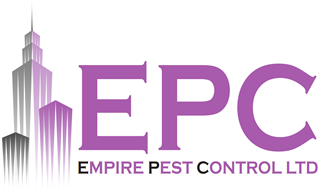Vulpes Vulpes
Fox Control In London
Foxes are one of Britain’s most notorious pests, garnering plenty of attention from the media and worried residents alike, both in built-up areas and rural locations.
But beneath the sensationalised reports of fox invasions and their aggressive nature, why do these pests cause such problems for homes and businesses in London?
In part, it is due to their number and their increasingly brave behaviour around humans. It is also due to the health risks they pose, and the commercial losses that can ensue from a fox problem.
Attracted to the steady and convenient supply of food and shelter in urban areas; foxes have adapted to a human dominated landscape and now thrive in town and city centres by making the most of food sources. The only issue is that this food supply is usually courtesy of family homes and food-related businesses, where foxes target waste bins and, in some cases, kitchens or storerooms.
The financial cost and unpleasant living and working conditions that occur as a result of a fox infestation are reason enough to seek a solution. As such, it is best to seek professional advice and fox controltreatment from an experienced company like Empire Pest Control.
About Foxes
The red fox is indigenous to Great Britain, but the increasing development of its natural rural habitat after WWI meant that adapting to urban and suburban landscapes became a necessity. Instead of hunting and preying on other forms of wildlife, foxes had to adjust to scavenging and surviving alongside humans, which they did well.
Unfortunately, they did this so well that in some areas they have thrived, becoming a nuisance and a pest. Making the most of large gardens, with their warm compost heaps, sheds and even bird bath water supply, foxes are now a common sight for people. What’s more is that these predominantly nocturnal pests are not afraid to show themselves in the daylight, if they have grown up and become accustomed to noisy city life.
To spot a fox, look for its defining features and distinctive appearance. The red-brown coat, with a paler underside, is a good clue as to whether or not you are dealing with a fox or a stray. Also, note that a fox’s height is between 35cm and 45cm, with a noticeable tail, 30-50cm in length.
While foxes only have one litter a year, the litters consist of anything between four and seven young, all of whom mature at one year. As such, you could see an infestation of nearly fifty foxes in just two years.
Solving Your Fox Problem
So many people mistake foxes for being shy, dog-like creatures, but they are indeed pests and need dispersing accordingly, in a safe and humane way.
Foxes can and do attack people and pets, but their aggression is not the only reason you need to solve your fox problem as a matter of priority. They damage gardens, act violently towards pets and carry sarcoptic mange (scabies) and distemper virus. This can be transferred to humans and pets, respectively; the latter can actually prove fatal for dogs and other pets.
To keep your pets safe, your business free from the effects of pest infestation and to avoid the other issues that come with a fox problem, call Empire Pest Control for advice and treatment plans. All of our fox control solutions are in accordance with the Wildlife and Countryside Act 1981 and The Protection of Animals Act 1911, meaning they are effective but humane. So get in touch now.




